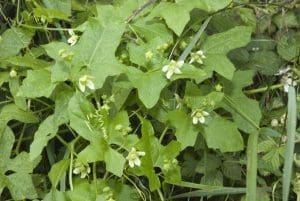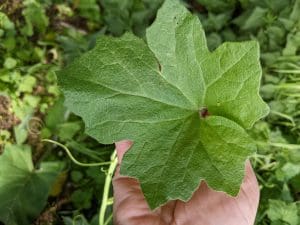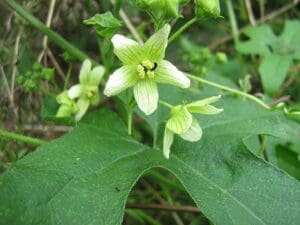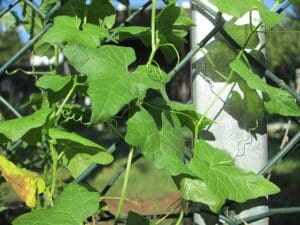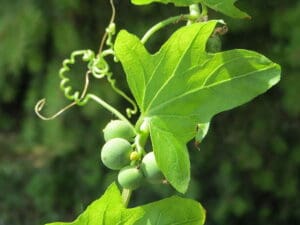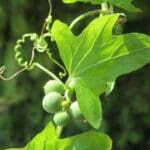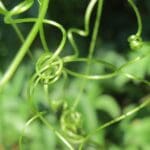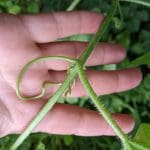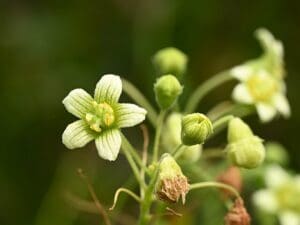White Bryony / Spring / Summer / Autumn / Toxic
White Bryony (Bryonia dioica) is a striking climbing plant found weaving its way through hedgerows and woodland edges across the UK. Its twisting tendrils, lobed leaves, and clusters of small greenish flowers give way to bright red berries in autumn, making it an eye-catching addition to the landscape. But despite its beauty, every part of White Bryony is toxic, including its berries, roots, and foliage. Ingesting even small amounts can cause severe stomach upset, vomiting, and other serious health issues.
For foragers and gardeners alike, recognising White Bryony is vital to avoid accidental contact or consumption.
In this post, we’ll share tips on how to identify this plant, where it grows, and why it’s one to admire from a distance rather than interact with.
Common Names
White Bryony, Wild vine, Wild mandrake, Wild hop
Botanical Name
Bryonia dioica, Bryonia alba
Scientific Classification
Kingdom – Plantae
Order –Cucurbitales
Family – Cucurbitaceae
Also called Cucurbits or the gourd family, this family also contains cucumber, squash and melon.
Physical Characteristics of White Bryony
Perennial climbing vine reaching up to 4 meters. If you’ve grown cucumbers or melons you will easily see the similarities, however the whole plant of White Bryony is poisonous. Roughly furry leaves and stems with tendrils, small greenish flowers, red berries and a yellow tuberous root. Dies back to ground level in winter.
Leaves
When young, they look similar in shape to Ivy leaves becoming palmate with 5 lobes. The leaves are hairy all over and a fresh grass green. Rough and matte in texture, vein patterns can show up lighter.
Stem
Green round vine, hairy with curly tendrils its uses to climb and cling on. New shoots appear in spring, flowers May to September, leaves start to change colour in September, the whole plant dies to ground level for winter.
Flowers
Small green/white 5 petalled flowers. Greener towards the centre of the flower and each petal has little green veins. There are separate male and female flowers on the same plant but they look very similar.
Fruit
Orange/red soft berries that persist on the leafless vine through late autumn and winter.
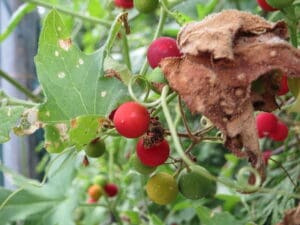
Habitat
The only native member of the cucumber family we have in the UK. Very common wherever there is a woodland edge or hedgerow for it to clamber and climb over. Likely to be found in hawthorn hedgerow where birds have left seeds in their droppings.
Known Hazards
Don’t ingest any part of the plant.
Can cause skin irritation.
When White Bryony is very young the new emerging shoots can look similar to an edible Hogweed shoot as they are both very furry and have pointed tips on the young leaves. Wait from them to establish more, Hogweed does not have tendrils and has a groove down the stem.
The berries on the vine when in leaf don’t resemble anything edible but as this is a vine who’s primary growth habit is over other species it may mix in with something like Hawthorn which also has smallish red round fruits, take care to distinguish. Especially when the White Bryony is just a leafless vine of berries it can be harder so take care.
Could Be Confused With
Most likely to be confused with Black Bryony (Dioscorea communis) pictured below, which is not related and actually in the yam family. Black Bryony is also poisonous so no concern there with distinguishing edible from toxic. They are similar in that they are both vines, grow in the same places and both make little red berries. The leaves are very different. Black Bryony’s are hairless, shiny and heart shaped and also don’t have tendrils.
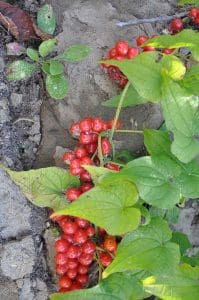
Edible Uses of White Bryony
The whole plant and berries are poisonous, it contains bryonin which is named after the plant. Bryonin is poisonous and may cause illness or death. Forty berries constitutes a lethal dose for adult humans
Notes on Herbal uses
In medieval times, the plant was thought to be an antidote for leprosy. It is rarely used in modern herbal medicine.
Extra notes from the Foragers
The root used to be sold as mandrake root with very unfortunate consequences for the buyer.
According to the fifteenth-century Herbarius Latinus, bryony was employed as a purgative, a diuretic, and an abortifacient.
Resources
https://www.rhs.org.uk/weeds/bryony
https://www.wildlifetrusts.org/wildlife-explorer/wildflowers/white-bryony



